When Vietnam War started the H-21 was the most capable helicopter of US Army. Main reason was the conflit experience that the french had in Algerian War with the type, not only carring troops but also armed with foward firing rockets, machineguns and bombs. The Flying Banana were better in transportation role and the Ch-34 was the main ground attack, one very good combination for French Army Aviation, but not so positive in Vietnam.
But also, was the official US evaluations that indicated the H-21 were more likely to survive multiple hits from AA that the H-34, becouse of the fuel tanks (but the lack of maneuverability and performance to ground atack was in fact a true problem). With no better machine, the experience of arming Piasecki continue with remote guns on the noise and in the doors, and in December1961 they went to Vietnam with Army's 8th and 57th Transportation Companies in support of not very succed ARVN troops, proving that those experiences were wise.
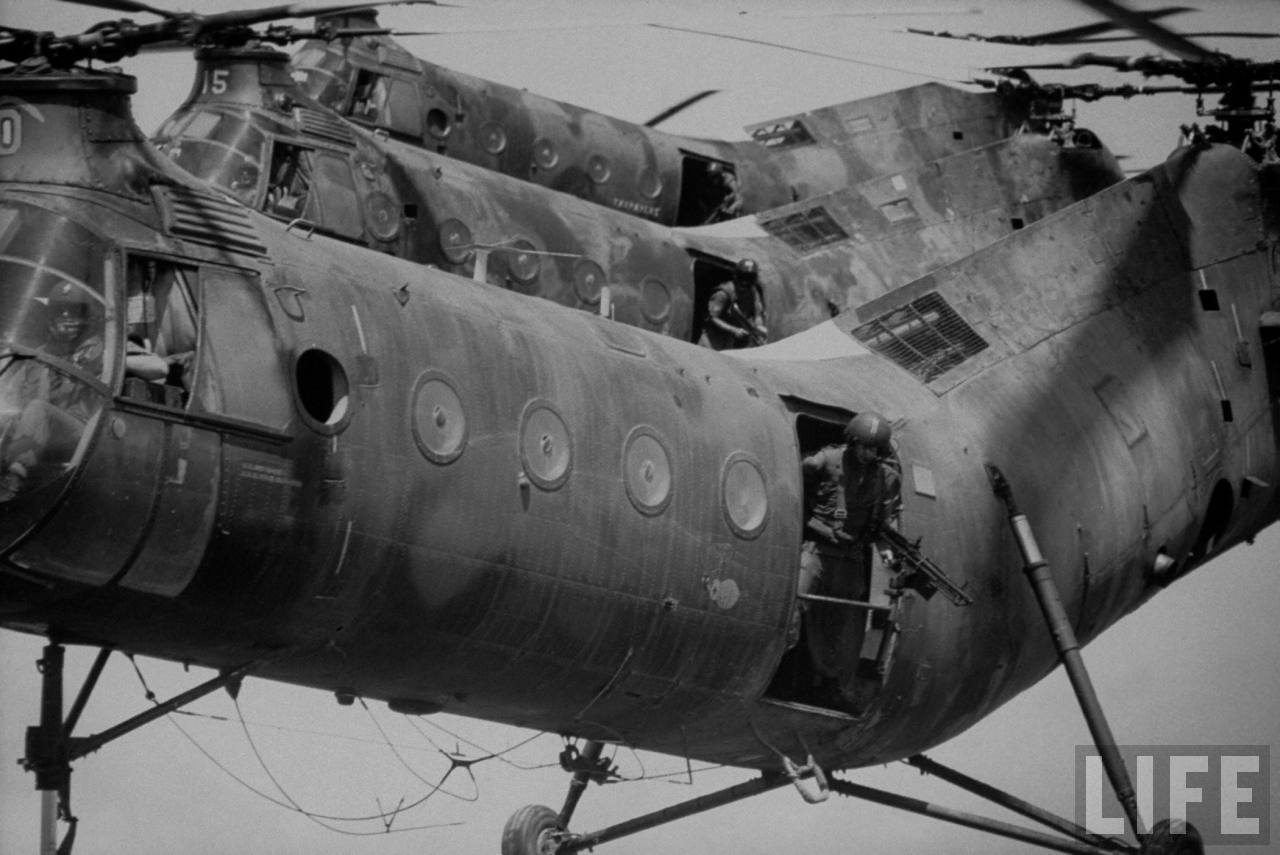 |
| The Gunship concept was another important role for "The Flying Banana". With an M-60. |
Armed with 0.30 and 0.50 fexible guns on the doors, the slow Ch-21 was important giving support to ARVN operations against the Vietcong. But the unprotected control cables and fuel lines proved vulnerable to automatic guns and heavy 12,7 mm AA machine guns. Another problem was the hot weather of South Vietnam in a helicopter design for could weather operations, wich give's to Piasecki poor performance (made for a crew of 20 men only carried 9 when in Vietnam). Dispite this events and also with the loss of an Ch-21 in July 1962 in Laotian - Vietnamese border with the death of 4 aviators, "the flying banana" were the workworse of the Army until 1964 when replaced by Uh-1 and Ch-47.
_%22Work_Horse%22_(Shawnee)_(9977393035).jpg) |
| The H-21C Cokpit |
Most of the times importance of H-21 is not granted. When helicopters were used for transport and MEDEVAC, the french and americans made the operacional use of this machine to Assault and Gunship (also the S-58/ H-34 was used in the same missions), extendend de use of armed helicopters to give the troops close support and mobility that doesn't existed at that time. Other concepts like VERTREP or Howitzer Transportation was also tested operacionally in Vietnam and give a strategy vantage that a General like Giap never understand becouse he doesn't had it.
It was the airmobile and the gunship concepts of first H-34 and H-21, with their problems and obstacles in Vietnam that bring to the conflit latter helicopters like Chinoock, Huey and Cobra. They made the biggining of what will be know as the "helicopter war" and prove that quick reaction teams "Eagle Flights" were very good to fly pursuit or block the enemy. Flexibility, units working together, shorter reaction time and the survivable concept of the helicopter was tested by this very first pioneers, specially the H-21 "flying banana", and proved to be right in this and other future wars like Afghanistan.
 |
| A H-21 with a 105 mm gun. This was one of the first helicopters capable of carring heavy cargo http://vietnam.warbirdsresourcegroup.org/h21shawnee-operation.html |
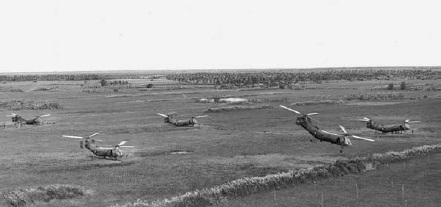 |
| Avery nice image of H-21 in South Vietnam 1963 carring troops http://www.historynet.com/ch-21-shawnee-the-flying-banana.htm |
 |
U.S. door gunner in a "Shawnee" Gunship looks for a suspect vietcong who run for a foxhole in Mekong River. Jan. 17, 1964 in Mekong Delta when Army provided support during a ARVN offensive
http://msuweb.montclair.edu/~furrg/Vietnam/pbhelicopter.html |
 |
| One of the first actions in Vietnam war of H-21 were give high mobility for ARVN troops http://blogs.denverpost.com/captured/2012/05/15/photographer-collection-horst-faas-vietnam/5689/ |
 |
A U.S. crewman runs from a crashed Ch-21 "Shawnee in December 11 of 1962 near the Village of Ca Mau in South Vietnam
http://www.helis.com/stories/shufly.php |
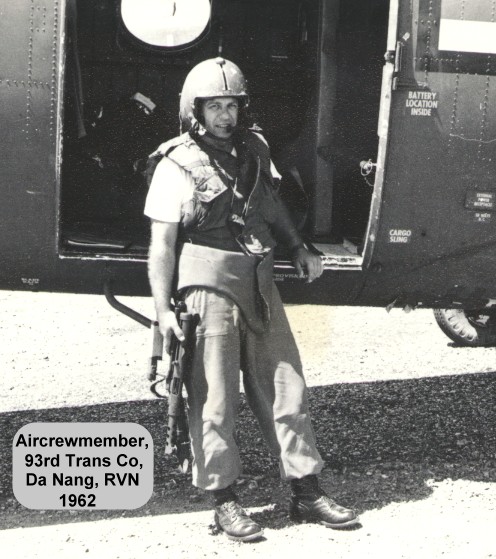
 |
| Air mobility was first tested in a large scale on Vietnam by H-21 http://en.wikipedia.org/wiki/Armed_helicopter |
 |
| PFC Gleen W. Rehkamp with a 0.30 M1919 in a Ch-21 from 57th Transportation Company (a pioneer unit in the use of armed helicopters in Vietnam) in first January 1963 https://sobchak.wordpress.com/2012/06/ |
 |
| PFC Gleen W. Rehkamp Door Gunner again in 15 April 1963 |
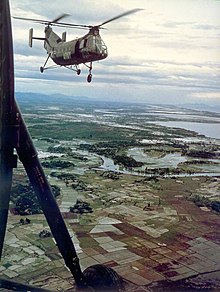



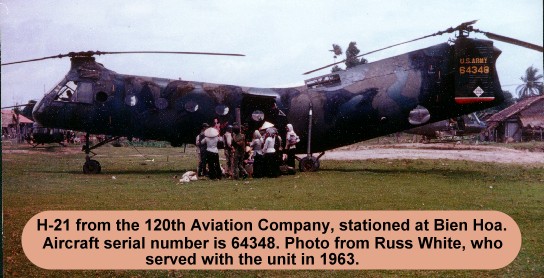
Sem comentários:
Enviar um comentário